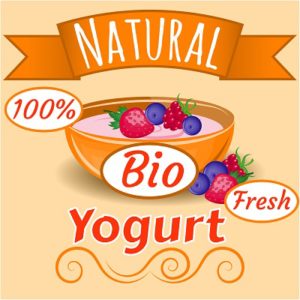 Recently, the World Health Organization reduced its recommendation by half as far as how much sugar we should be consuming – now 5% of our daily caloric intake. If you are on a 2,000 calorie per day diet, that amounts to 100 calories per day or about 5 teaspoons.
Recently, the World Health Organization reduced its recommendation by half as far as how much sugar we should be consuming – now 5% of our daily caloric intake. If you are on a 2,000 calorie per day diet, that amounts to 100 calories per day or about 5 teaspoons.
But you are most likely eating far more sugar than you think, especially if you eat these foods:
1 – Salad Dressings
Light and fat-free salad dressings are generally loaded with sugar and salt to make up for the flavor lost from removing the fat. Some have as much as 9 grams of sugar per serving.
The worst offenders are ketchup-based dressings, such as French and Russian, along with some vinegarettes containing fruit.
When ordering salad dressing ask for it on the side. That way you can lightly dip a fork full of salad in the dressing instead of pouring the whole serving on your salad. When buying salad dressings look for the ones that have 2 grams of sugar or less per 2-tablespoon serving.
2 – Cereals
While you may expect some cereals to have added sugar, you may be surprised to learn that many of the so-called healthy cereals and granola are loaded with sugar too – upwards of 15 grams per one-cup serving. Read the nutrition label to know how much sugar a cereal contains.
3 – Dried Fruit
Dried fruit sounds healthy enough; don’t they just take fresh fruit and dry it? If that was all companies did, it would still be natural and healthy, however, many companies add sugar in the process.
For example, some dried cranberries can have as much as 29 gram of sugar per serving, where a cup of natural fresh cranberries only has 4 grams of sugar. Granted the drying process does concentrate the sugar content, but not by 25 grams per serving. Again, check the nutritional label. Usually a health food store is a good place to buy natural dried fruit.
4 – Sauces
Barbecue, teriyaki and jerk add a lot of flavor to grilled meats, but they can also add a lot of sugar – some as much as 12 grams per 2-tablespoon serving. When eating out, ask for half the sauce or ask for it on the side, then you can add as little as you want. If you make your own, cut down the amount of sugar you add.
5 – Yogurt
While all yogurts typically have some sugar – natural sugar lactose in the milk – it’s the added sugar typical of “fruit” yogurts that you need to watch out for. While it takes some time to acquire its taste, Greek yogurt is one of the lower sugar yogurts.
To cut down on the amount of sugar you eat, learn how to identify sugar on nutrition labels. It can go by many names, including: white sugar, brown sugar, confectioner’s sugar, corn syrup, dextrin, honey, invert sugar, maple syrup, raw sugar, beet sugar, cane sugar, corn sweeteners, evaporated cane juice, high fructose corn syrup, malt, molasses and turbinado sugar, to name a few.






